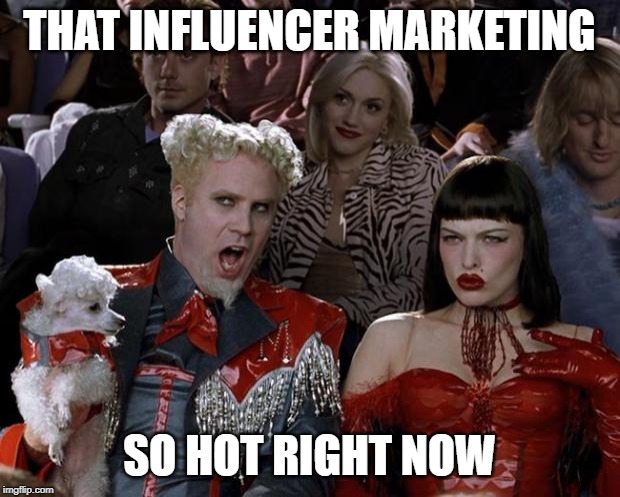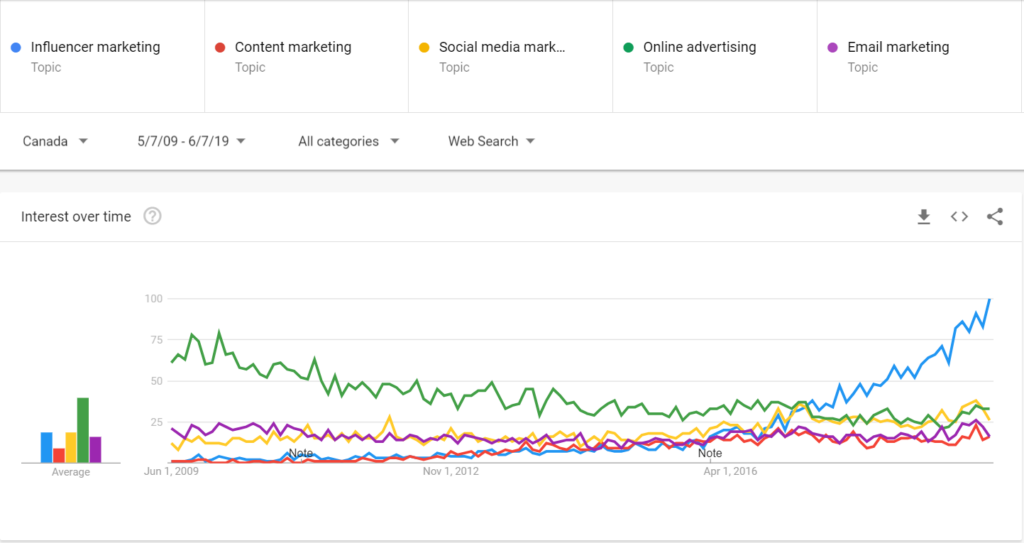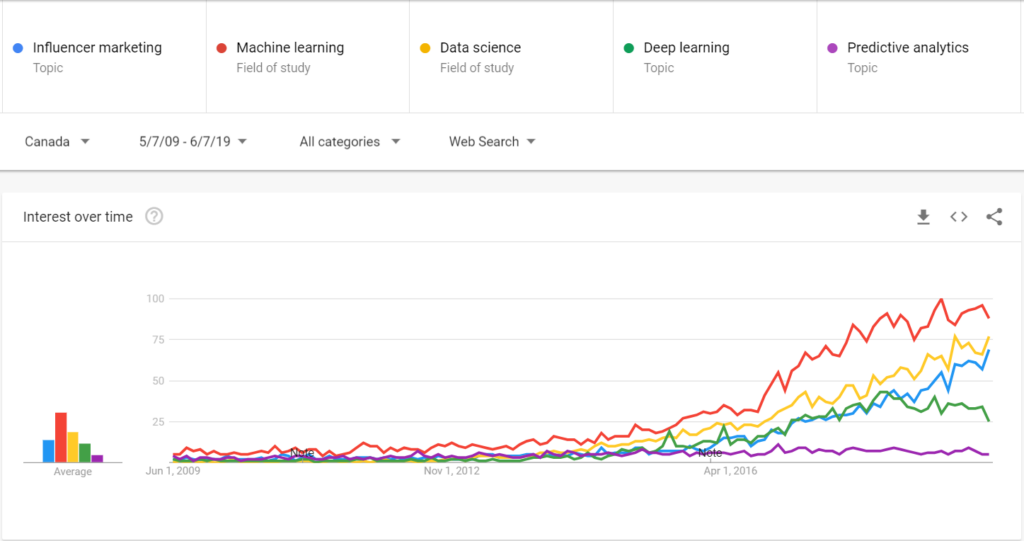Wait a minute. Wait.
Hold on. Just, stop.
Before you hit “Tweet” on that reflexively angry comment:
At the risk of being accused of click-baiting, let me be clear: I don’t have a problem with influencer marketing per se. I feel like I need to stress that right off the hop – if only because there’s another “Kairos Media” out there (based in the UK), who are known for their work as an influencer marketing agency. And to be honest, after reading through a bit of their website, most of what I have to say here probably doesn’t apply to an agency like theirs.
Influencer marketing is just fine. Alright? Okay. But “influencer marketing” is absolute bullshit.
I can tell that distinction is going to need some unpacking. So, let’s stuff this straw-man.
Influencer Marketing? Inconceivable!
Let’s start with a simple question: what is influencer marketing? The answer: it depends on who you ask.
Here’s a fun exercise you can try: open up a new tab in your browser, and run a search for a few different definitions or explanations of the phrase influencer marketing. Go ahead and read the first paragraph, or watch the introductions from a few videos.
Then, I want you to consider exactly how much of what you’ve just been told about influencer marketing couldn’t be applied equally to some other phrase, like “public relations”. Or “social media marketing”. Or, y’know, “marketing”.
Hootsuite’s definition doesn’t offer us much help here; they explain, “Influencer marketing is a collaboration. A business collaborates with an influential person to promote something. It could be a product, service, or campaign.” Neither does this one from Pixlee, or this post from CPC Strategy, or this article from Forbes, or this explainer article from Tapinfluence.
One of the first challenges one runs into when talking about influencer marketing is the sheer volume of waffle in how it’s defined; the phrase can be interpreted so broadly as to render it functionally meaningless. So if this post starts to read like a purely straw-man argument, please bear in mind that I am standing in a field full of scarecrows here.
Yet despite this ambiguity (or possibly because of it), influencer marketing has become one of the hottest topics in an industry practically built on buzz.
To put the recent hype around influencer marketing into context, take a look at this Google Trends graph, which compares relative monthly search interest for a few popular digital marketing topics within Canada over the past decade:
As you can see, searches related to influencer marketing have been climbing rapidly over the past two-or-so years. Search volumes have increased so much in recent months that you’d need to go all the way back to 2007 before you’d find comparable interest in any of the other topics listed here.
All that newfound interest is quickly turning into real dollars. According to a recent benchmark report from Influencer Marketing Hub, 86% of marketers surveyed plan on committing a dedicated budget for influencer marketing this year, compared to just 37% of respondents two years ago. Their survey also found that 63% of respondents plan on increasing their investment in influencer marketing over the next twelve months, and that nearly half plan to allocate at least one-fifth of this year’s overall marketing budget into influencer marketing
The point I’m trying to get at is this: influencer marketing (as it’s commonly defined) has been around for more than a century, and “social media influencers” have literally existed for as long as social media has been influential. So what, exactly, is fueling this recent surge of interest among online marketers?
Well Well Well, If It Isn’t My Old Nemesis…
To try and answer that question, let’s use another Google Trends graph. Here, I’ve applied the same location and date filters as in the previous graph, but this time we’ll compare search interest in “influencer marketing” with searches for a few topics related to another favourite buzzword among digital marketers lately:
Artificial Intelligence.
Correlation may not imply causation, but it does feel significant that the rising popularity of influencer marketing so closely mirrors our industry’s recent adoption of phrases like “data science” and “machine learning”.
I would even argue – in fact, I am arguing – that however you might choose to define the phrase, what we’re really talking about when we say “influencer marketing” today refers to one very specific kind: one that relies on marketing automation to, in the words of one influencer platform’s CEO, “just let Artificial Intelligence and Machine Learning work it out.”
And it’s this version of “influencer marketing” that is just… just so utterly and so *comprehensively* bullshit. I’m not even going to apologize for saying it this time.
Talkin’ Bout Bullshit
The value proposition at work here is fairly straightforward. “Traditional” forms of influencer marketing can be time and resource-intensive to coordinate and execute. Results are often unpredictable or inconsistent from campaign to campaign, and the channel tends not to scale very easily.
Enter: the “influencer marketing platform”.
Influencer marketing platforms aim to harness the power of *machine learning* and *The Algorithm™* to help brand marketers discover and connect with so-called “micro-influencers”: social media users who might not boast the massive follower counts of your typical “influencer”, but have nevertheless built a dedicated and highly-engaged audience who share their interests and value their opinions.
These platforms boast searchable indexes of thousands (sometimes millions) of such micro-influencers, all eager to partner with brands (just like yours!) to produce unique content for their followers, while helping their brand partners to build a more authentic, meaningful connection with potential customers.
Sounds ideal, right? Of course it does! It’s a win-win situation for everyone involved. However…
“The Tradition Of Festivus Begins… With The Airing Of Grievances”
In earlier drafts of this post, I considered writing this section in more of a listicle format, discussing point-by-point the various issues with an automated, technology-driven approach to influencer marketing.
That idea quickly got abandoned, because my word-count might be unlimited but your time and attention are finite. It’s probably best if I just run through these, rapid-fire style.
*Ahem*
Well, for starters, the pricing model is fucked. Marketers typically pay influencers a flat rate per-post, based primarily on their total follower count – a metric with only tenuous connection with any viable marketing KPI.
Speaking of metrics, attribution is dodgy at the best of times, and impossible for most of the rest. To collect campaign performance data, many influencer agencies still recommend that brand marketers ask their influencers to “send screenshots” of impression and engagement metrics for sponsored posts once the campaign has ended.
What else? Oh yeah, the users aren’t real; they’re bought and paid for. Social media followings aren’t so much “earned” as they are artfully arbitraged.
Most Instagram influencer accounts – over sixty per cent – exhibit signs of fraudulent bot activity. It’s estimated that a typical “mid-level influencer” with 50k-100k followers will find roughly 20 per cent of their audience consists of bots – regardless of whether or not they themselves have purchased bot followers. The likes are fake. The shares are fake. The comments are fake. And the interactions between influencers and their audience – even when that audience is composed of actual, living humans – are frequently inauthentic.
Sometimes, even the influencers are fake. One agency, Mediakix, famously ran their own successful Instascammer accounts, then published step-by-step instructions detailing how simple and inexpensive the whole process was. Then, months later, they ran a similar con on seven different restaurants and four separate hotels, using one of the exact same accounts – nobody at Instagram had bothered to remove them after the stories broke, and none of the marketers ever bothered to check.
The Rent’s Atrocious, But Such A Lovely View
Given that my own career has largely been spent in online display advertising, I realize that to some degree I’m throwing stones from a glass house here.
Many of these same complaints have been leveled against online display over the years – and often, rightly so. Ad fraud remains a pervasive problem throughout the ecosystem. Plenty of once-authoritative metrics have come under scrutiny or fallen out of favour. And the industry suffers from plenty of its own AI-flavoured magical thinking.
The key difference here is that many very smart people have spent a very long time now working to make the online display market better. And it has gotten better. It still is.
But in a paid media supply chain where the publishers are marginally-famous Instagrammers, the buyers are never sure of what’s going on, and the tech platforms sitting between them can charge exorbitant licensing fees to brands while adding dubious value, I see very little profit motive for anyone involved (right now) to clean up the marketplace.
When I look at the kind of money digital marketers seem poised to sink into influencer marketing platforms over the next few months, I see an industry looking backwards, to an era when banners were sold by the month, and agency planners still relied on the unique visitor stats found on last year’s rate card to make most of their online ad buys.
There’s No App For That
Three or four rants ago – way back there – I listed off a few characteristics of “traditional” influencer marketing. It takes a lot of time and energy to pull off successfully. Results are hard to predict, and virtually impossible to replicate on a consistent basis. Fruitful partnerships with influential content creators and thought leaders can be really, really hard to nurture and maintain.
You’ll notice that I refer to these as “characteristics”. Not “problems”.
Building a successful brand is hard work. Forming meaningful connections with current and potential customers is hard work. Building positive word-of-mouth, fostering a culture of brand advocacy, both hard work.
Good. Put the work in. It’s supposed to be hard. If it wasn’t hard, everyone would do it.
…Why yes, I did steal that line from A League Of Their Own. It’s a good line!
Persuasion is a messy, complicated business; that’s why it tends to pay so well. Marketers aren’t going to machine-learn their way out of that anytime soon.



